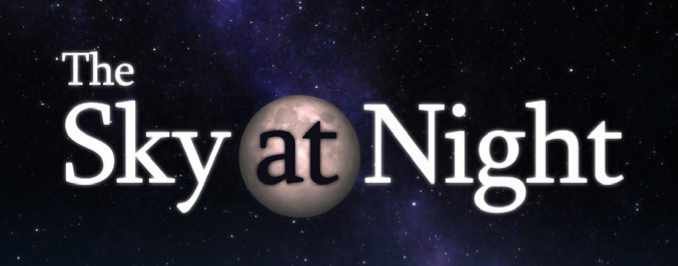With multiple locations and interviewees, there was plenty to organise for January’s Sky at Night, and Carisse Perks made it all run smoothly

Despite not being what anyone would call an ‘outdoors person’, in late November 2021 I found myself shivering on top of a very windy hill in Hampshire waiting for the Sun to set. After all, what’s a Sky at Night episode about dark skies without filming under some?
I have always loved TV, so late one day in March 2017, while thinking long and hard about what I wanted to do with my life, I released that was it. I did some research into the different roles and routes into the industry, and thought that with my background in admin, the production management route was the right one for me. I am now the Production Coordinator on The Sky At Night. Whenever anyone asks me what it involves, I usually say, “It’s mostly booking trains.” But in reality it is a lot more than that.
We usually film one episode per month, around two and half weeks before the episode is due to air, as each episode takes two weeks to edit. This wasn’t possible for the January episode, as that would have meant filming over Christmas and New Year – and trying to get locations, interviewees, editors, film crew and presenters all available at the same time is hard enough at the best of moments! So we filmed this in November, just before our December episode.
Multiple locations
I set up filming at our three main locations. As well as the South Downs National Park with presenter Pete Lawrence, we also filmed at the Van Gogh ‘Immersive Experience’ in East London, with Chris Lintott and Maggie Aderin-Pocock chatting about how the night sky has changed over the years since Van Gogh painted his famous Starry Night. Lastly, we recorded at Television Centre in West London with the Baker Street Irregular Astronomers telling Chris how they do astronomy in Central London with its high levels of light-pollutiion. I’m the main point of contact for any location, and so I make sure we have the right permissions, negotiate access times and make sure that the location is aware of how many of us are turning up, which can be between two and ten people.
While it is not the norm for Production Coordinators to go out on location, I try and go whenever I can, and I have been on near-enough every shoot of this series. It’s invaluable when it comes to dealing with post-production paperwork and talking about the episodes with each of the team. Every episode is different, but I am generally on hand for all important lunch and coffee runs, as well as helping to carry some of the vast amount of kit.
It’s also my job to keep an eye on the budget, and make sure we don’t overspend. Thankfully, there is a lot of goodwill towards our show, and most people are happy to negotiate with me!
And so back to that hilltop in November. Yes, it was cold and a little muddy. And yes, we had to lug a huge amount of film equipment up a hill. And yes, it was still cloudy so we couldn’t see the stars. But, in the dark, among the sheep, I couldn’t help feeling proud to be a small part of the 818th episode of this long-running show, in Moore’s Reserve –a dark-sky site named for our most famous presenter.

Carisse Perks is the Production Coordinator for The Sky at Night
Looking back: The Sky at Night
18 February 1991

In the February 1991 episode of The Sky at Night Patrick spoke with Andrew Lyne, an astronomer from Jodrell Bank near Manchester. They discussed millisecond pulsars, which flash radio waves hundreds of times a second with such precise timing they’re often referred to as ‘the fastest clocks in the Universe’. The Lovell Telescope at Jodrell Bank has observed pulsars since they were first discovered over 50 years ago, and today monitors over 800 radio pulsars.
A pulsar is the rapidly rotating remains of a dead star, normally a neutron star though they can be white dwarfs. These stellar corpses are highly magnetised and emit intense beams of electromagnetic radiation from their poles. As the stars rotate, the beams sweep across space. On Earth, we see them as a faint point of light blinking on and off, visible only when the beam passes over. The rate of a pulsar’s spin is precise, hence their use as cosmic clocks.
The first pulsar to be discovered in 1967 pulsed once every 1.33 seconds, which was why astronomers were shocked in 1986 when the Lovell Telescope detected a pulsar flashing once every 1.55 milliseconds. It was the fastest pulsar yet seen, and remained so until 2005, when a pulsar with a pulse of 1.39 milliseconds was discovered.

Universe
The Sky at Night is taking a break in February and March, and will return in April for more adventures in astronomy and spaceflight. In the meantime, you can still catch up with Professor Brian Cox’s latest series Universe, which is available to watch on the BBC iPlayer. In this five-part series, Professor Cox takes a trip across space and time to reveal the chaotic and often beautiful moments that irrevocably altered the evolution of the cosmos.
Watch via bbc.co.uk/iplayer
